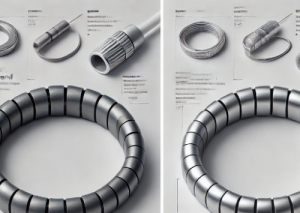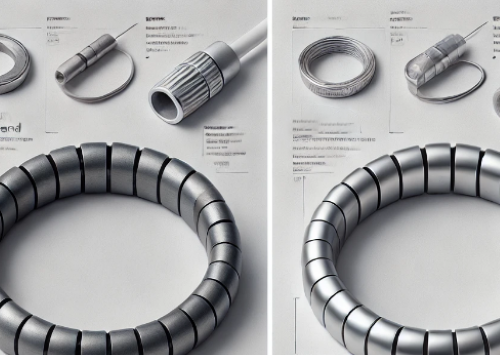Introduction
Marker bands are radiopaque markers used in medical devices like catheters and stents to enhance their visibility under fluoroscopy during procedures. Both tantalum and platinum marker bands have unique properties, making them suitable for different applications. Here’s a comparison of the two:

Tantalum Marker Bands
- Density and Visibility: Tantalum has a high density (16.69 g/cm³), making it highly radiopaque and easily visible under fluoroscopy.
- Biocompatibility: Tantalum is biocompatible and is well tolerated by the human body, reducing the risk of adverse reactions.
- Corrosion Resistance: It exhibits excellent resistance to corrosion, ensuring long-term stability within the body.
- Cost: Tantalum is generally less expensive than platinum, making it a cost-effective option for medical devices.
- Mechanical Properties: Tantalum is ductile and can be easily formed into thin bands, which is beneficial for manufacturing.
Platinum Marker Bands
- Density and Visibility: Platinum has an even higher density (21.45 g/cm³) than tantalum, providing superior radiopacity and making it extremely visible under fluoroscopy.
- Biocompatibility: Platinum is also highly biocompatible and widely used in medical devices due to its inert nature and low risk of causing adverse reactions.
- Corrosion Resistance: Platinum is highly resistant to corrosion, ensuring long-term durability within the body.
- Cost: Platinum is significantly more expensive than tantalum, which can increase the overall cost of medical devices.
- Mechanical Properties: Platinum is malleable and can be easily formed, but it is softer than tantalum, which can influence the choice based on the specific mechanical requirements of the device.
Summary
- Tantalum marker bands are a cost-effective option with excellent radiopacity, biocompatibility, and corrosion resistance. They are suitable for many medical applications where cost and durability are critical.
- Platinum marker bands offer superior radiopacity and biocompatibility but at a higher cost. They are ideal for applications where maximum visibility is crucial and cost is less of a concern.
| Property | Tantalum Marker Bands | Platinum Marker Bands |
| Density and Visibility | High density (16.69 g/cm³), highly radiopaque and visible under fluoroscopy | Even higher density (21.45 g/cm³), superior radiopacity, extremely visible under fluoroscopy |
| Biocompatibility | Biocompatible and well tolerated by the human body | Highly biocompatible and inert, low risk of adverse reactions |
| Corrosion Resistance | Excellent corrosion resistance, ensuring long-term stability within the body | Highly resistant to corrosion, ensuring long-term durability within the body |
| Cost | Generally less expensive than platinum, cost-effective | Significantly more expensive, increasing overall cost of medical devices |
| Mechanical Properties | Ductile and easily formed into thin bands, beneficial for manufacturing | Malleable and easily formed, but softer than tantalum, influencing mechanical requirements |
The choice between tantalum and platinum marker bands depends on the specific requirements of the medical device, including visibility needs, cost considerations, and mechanical properties.
Advanced Refractory Materials (ARM) is a worldwide supplier of tantalum products. Hope that you can find the perfect marker bands.
Related reading:
The Versatility Of Tantalum Marker Bands: Applications And Benefits
Related case:
